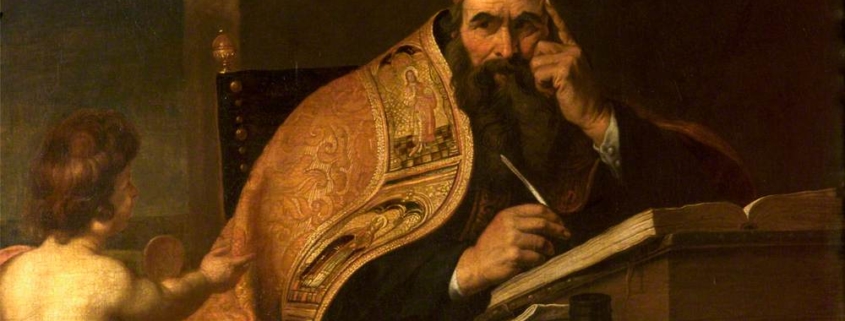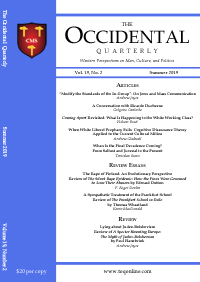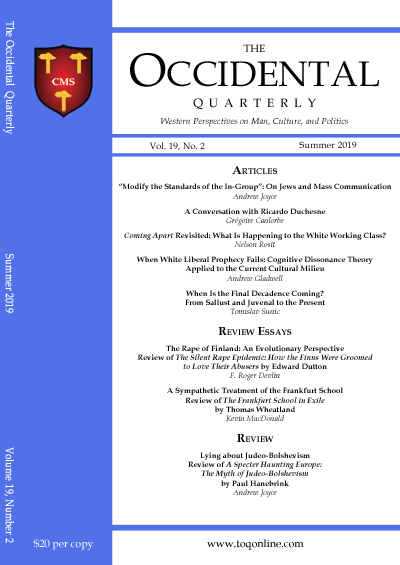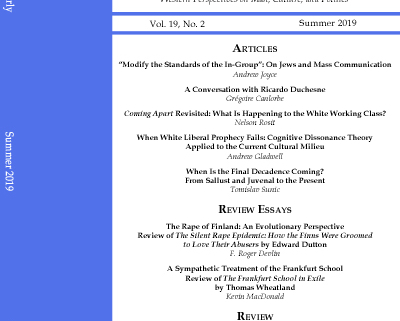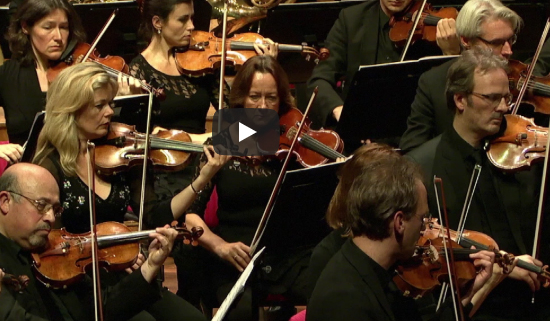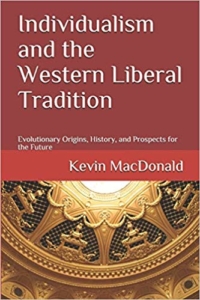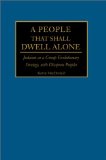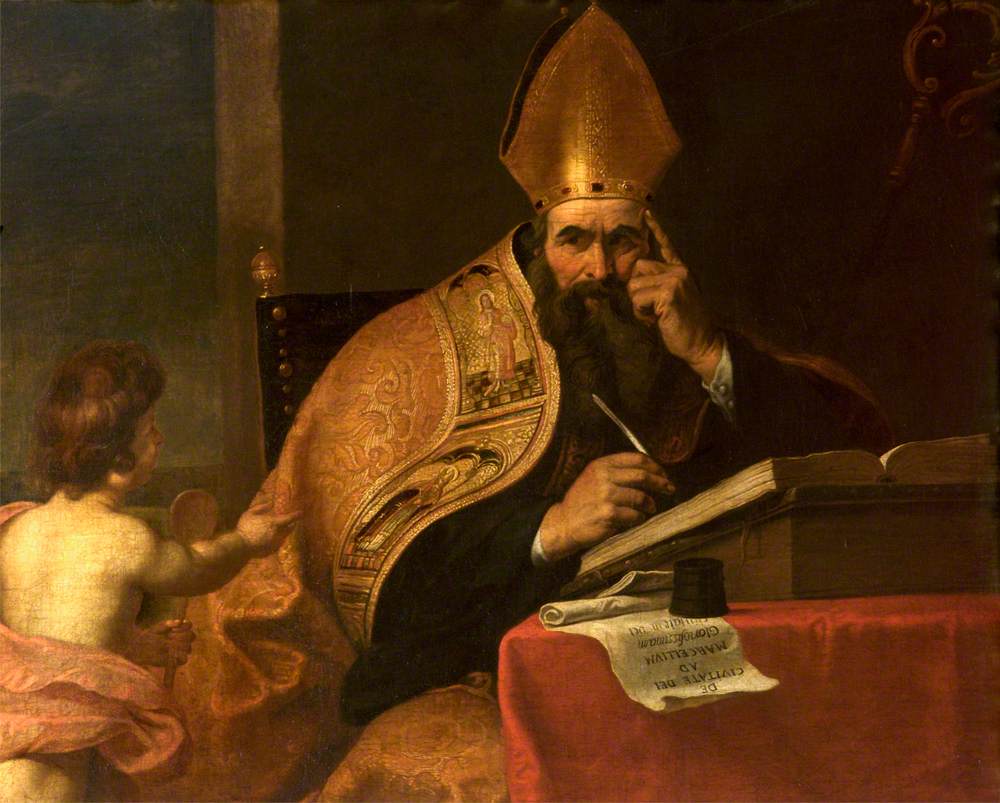
St. Augustine [1]of Hippo (354–430)
Augustine’s Hellenistic Hermeneutic
Augustine’s interpretation of the biblical metanarrative portrays both the creation and the end of the world as the appearance and disappearance of corruptible material existence. He had no doubt that the New Testament writers were predicting the literal end of the earthly world when, as “[t]he whole Church” expected, Christ would “come down from heaven to judge the living and the dead.”[1] Augustine was clear that the Day of Judgement applied not just to the people of Israel but to “the rest of the nations as well.”[2] Faithful Christians, those who live according to the spirit, would exchange the perishable goods of mortal existence for the “Supreme Good” of an imperishable “eternal life” in the City of God. Other mortals, those who live according to the flesh, would suffer the “Supreme Evil” of “eternal death,” the nothingness inherent in the absolute privation of the Good.[3] It was out of just such nothingness that the world was created on Augustine’s understanding of Genesis One. Furthermore, Augustine’s understanding of Genesis 2–3 identifies Adam, not as proto-Israel, but as the first human being. Accordingly, it not just Old Covenant Israel but mankind as a whole which faces judgement at the end of the world.
Augustine’s neo-Platonic cosmology presupposed the absolute dependence of both mankind and the material world itself on an omnipotent, omniscient, and omnipresent God. Seduced by the delights of our mortal life “we have wandered far from God,” losing sight of “the invisible things of God.”[4] The inherent difficulty mortal beings experience in apprehending such invisible divine “objects” must make us eternally thankful for the revealed Word of God. But a proper understanding of sacred scripture depends upon two things, according to Augustine: “the mode of ascertaining the proper meaning, and the mode of making known the meaning when it is ascertained.” Understanding the world generally requires that we distinguish between things and signs. “All instruction is about things or about signs; but things are learned by means of signs.” There are spiritual as well as material things and signs. Higher spiritual things are the true objects of enjoyment and use. A man should view his whole life as “a journey towards the unchangeable life, and his affections [should be] entirely fixed upon that.”[5]
The Bible is both a material and a spiritual thing which can be used or enjoyed in order to understand and participate in the imperishable City of God. Augustine reminds his readers, however, that not every spiritual or material thing can be judged by its outer form. On the surface, biblical prophecies of the Day of the Lord may appear to be addressed only to Old Covenant Israel, warning of the impending destruction of Jerusalem. The inner form of such scriptural signs of things to come can sometimes only be understood “by comparing all the similar passages on the subject which occur in the three evangelists Matthew, Mark, and Luke.” Augustine points as well to John “who tells us most clearly that the judgement should take place at the resurrection of the dead.”[6] Clearly, Augustine conceives the resurrection of the dead as a material and bodily, not a solely spiritual, phenomenon. No such event has taken place; therefore, he expects the fulfillment of that prophecy to occur at some still future time.
Augustine knew, of course, that many “wise men of this world” scoffed at any suggestion “that the earthly bodies of men” can “be carried over into a heavenly habitation.” To ward off such scepticism, he drew upon an idea that appeared quite suddenly in the late second century AD to defend the idea of a bodily resurrection. Augustine deployed the doctrine of creation ex nihilo to demonstrate that “He Who in making this world…has already accomplished something far more wondrous than the transformation in which our adversaries refuse to believe.” If God has already bound “incorporeal souls” to earthly bodies, why should we doubt “that bodies, though earthly, should be raised up to abodes which, though heavenly, are nonetheless corporeal.”[7]
During Augustine’s lifetime, such metaphysical speculation on the origins of matter had already become commonplace among neo-Platonic philosophers such as Plotinus. Augustine followed Plotinus in contending that “creatio ex nihilo was the expression of God’s omnipotent ability to create without need of supporting causes.” Such a doctrine was nowhere to be found in the New Testament.[8] Neither the New Testament writers nor Plotinus were responsible for the connection made by Augustine between the creation story and the eschatological hope of a still future resurrection of the body.
Augustine taught “that because every created intelligence had its origin ex nihilo, it also had to look beyond itself for its end. Every creature lacked God’s perfection and was therefore mutable. Because it was mutable it could fall away from that end and become evil.”[9] At the same time “the resurrection of our Lord from the dead” added “a great buttress of hope” to our faith. Our bodies, too, after the death we suffer because of sin “shall at the resurrection be changed into a better form…this corruptible shall put on incorruption, and this mortal shall put on immortality.” He urged the faithful to believe “that neither the human soul nor the human body suffers complete extinction but that the wicked rise again to endure inconceivable punishment, and the good to receive eternal life.”[10] Read more




